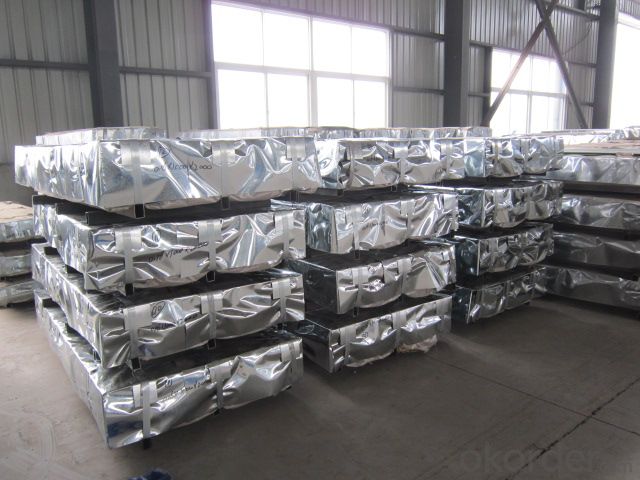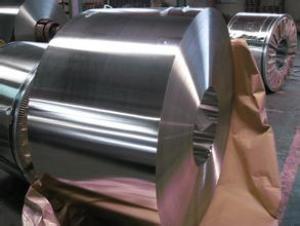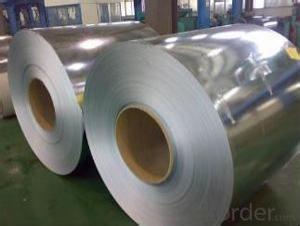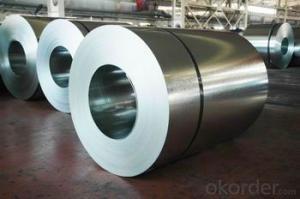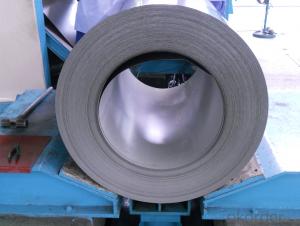Hot-dip Galvanized Steel Sheet in Sheet
- Loading Port:
- Tianjin
- Payment Terms:
- TT OR LC
- Min Order Qty:
- 50 m.t.
- Supply Capability:
- 1000 m.t./month
OKorder Service Pledge
OKorder Financial Service
You Might Also Like
Description:
The most external layer is all zinc, but successive layers are a mixture of zinc and iron, with an interior of pure steel. These multiple layers are responsible for the amazing property of the metal to withstand corrosion-inducing circumstances. Zinc also protects the steel by acting as a "sacrificial layer." If rust does take hold on the surface of Galvanized Steel Coil, the zinc will get corroded first. This allows the zinc that is spread over the breach or scratch to prevent rust from reaching the steel.
Architecture Roofs and outside walls of civilian and industrial buildings, garage doors, fencings and window blinds.
1. Good Resistance to Corrosion
2. Qualified Processing Machinability
3. High Thermal Resistance
4. Excellent Reflectivity
5. Inexpensive and effective enough
6. Can be recycled and reused multiple times
Application:
With excellent cold bending molded manufacturablity, good decoration effect, strong anti-corrosion ability, galvanized steel coils and sheets are also pollution-free and easily recycled. Accordingly, they can be used as final products and basic plates of color coated steel coils and widely applied in construction, home appliances, decoration.
Construction, packaging, railway vehicles, agricultural machinery and daily life.
Oiled/dry, Skin-pass/Nonskin-pass, Regular/Minimize/Zero Spangle
For countless outdoor, marine, or industrial applications, Galvanized Steel Coil is an essential fabrication component.
Architecture Roofs and outside walls of civilian and industrial buildings, garage doors, fencings and window blinds.
Appliances Industry Outer clad sheets for washing machine, refrigerator, television, air conditioner and ventilation system, explosion-proof strip, solar water heater and appliance parts.
Auto Industry Muffler, heat shields of exhaust pipe and catalytic converter, auto parts & accessories under the frame, signboard in highway
Industrial Instruments Electric control cabinet, industrial refrigeration equipment, automatic vending machine
Product Specification:
Base sheet : galvanized steel sheet, pre painted galvanized steel sheet
Zinc:40G-275G
Thickness:0.12mm-3.2mm
Width:600mm-1500mm
Length:1000mm-11800mm or as request
Package:Standard seaworthy export packing: 3 layers of packing, inside is kraft paper,water plastic film is in the middle and outside GI steel sheet to be covered by steel strips with lock.
FAQ:
1.How many pieces for one ton of the Hot-dip Galvanized Steel Sheet?
The pieces for one tone is decided by the thickness of the sheet, but we can make it according to your requirements in the reasonable range.
2. Do you have pallets for the package?
Yes, we must use pallets for the package in order to load.
3. How many tons do you load in one 20’FCL?
Usually we can load 26tons in one 20’FCL container.
- Q: Hello,I have been thinking about buying a Tungsten Carbide Diamond wedding band for my husband but one of my family members keep telling me that Tungsten Carbide is merely steel and hence, a low quality metal, therefore, I shouldn't buy it. I don't really know much about it. Please if anyone can tell me more about this metal? Thanks.
- Edmond, a laser doesn't scratch anything, it melts. We're talking physical properties, not plasma properties. At NORMAL temperatures of 70-90 degrees F. If you don't understand the question, quit answering. Id imagine tungsten carbide can scratch itself. Much like an ape. :) - The Gremlin Guy -
- Q: How are steel coils used in the production of electrical appliances?
- Steel coils are used in the production of electrical appliances as the core material for transformers and motors. The coils are wound around an iron core to create electromagnetic fields that enable efficient energy transfer and power generation within these appliances.
- Q: Can steel coils be cut or trimmed after delivery?
- Yes, steel coils can be cut or trimmed after delivery. Steel coils are typically delivered in large sizes and can be easily cut or trimmed to the desired length or shape using various cutting methods such as shearing, slitting, or laser cutting.
- Q: How are steel coils processed for different levels of hardness?
- Steel coils can be processed for different levels of hardness through a combination of heat treatment and mechanical processes. To increase the hardness, the coils undergo a process called quenching and tempering. This involves heating the steel to a specific temperature, followed by rapid cooling (quenching) to create a hardened structure. Subsequently, the coils are reheated to a lower temperature and held there for a specific duration (tempering) to achieve the desired level of hardness. Other mechanical processes, such as cold rolling or cold drawing, can also be employed to further enhance the hardness of the steel coils.
- Q: How are steel coils used in the marine industry?
- Steel coils are commonly used in the marine industry for various applications such as shipbuilding, offshore structures, and maritime equipment. These coils are used to manufacture components like hulls, decks, bulkheads, and other structural parts that require high strength and durability. Additionally, steel coils are also used in the production of marine machinery, pipelines, and storage tanks, ensuring the reliability and performance of vessels in harsh marine environments.
- Q: Hey do you know what is Steel Arch Building and how it looks like exactly??
- Typically, okorder /
- Q: What is the difference between hot rolled and cold rolled steel coils?
- The main difference between hot rolled and cold rolled steel coils is the process by which they are made. Hot rolled steel coils are produced by heating the steel above its recrystallization temperature, allowing it to be easily shaped and formed. This process results in a rougher surface finish and less precise dimensions. On the other hand, cold rolled steel coils are produced by further processing hot rolled coils through a series of rolling mills at room temperature. This process results in a smoother surface finish, tighter tolerances, and improved mechanical properties.
- Q: What are the different types of steel coil edges?
- The different types of steel coil edges include mill edge, sheared edge, slit edge, and deburred edge.
- Q: Is it possible that stainless steel watches get rust. Any experience? Thanks.
- Stainless steel doesn't usually rust..... However, a lot of so-called stainless steel watch cases are actually base-metal, and does.
- Q: I want to replace the old refrigator within the next 6 months........ Is the trend to buy a stainless steel refrigerator? Some magazines and internet sites are pointing me that direction. What are the pro's and con's ? I like the color bisque, or cream-color as well, or better, than stainless steel. What would be the reasons to buy stainless steel...is it becoming the most popular color ?
- I think it's just the popular choice at the moment like avocado green was the hottest thing in the 1970s. I bought a Whirlpool Sateen. It has the look of stainless steel, but magnets will stick to it. There is no functional difference.
Send your message to us
Hot-dip Galvanized Steel Sheet in Sheet
- Loading Port:
- Tianjin
- Payment Terms:
- TT OR LC
- Min Order Qty:
- 50 m.t.
- Supply Capability:
- 1000 m.t./month
OKorder Service Pledge
OKorder Financial Service
Similar products
Hot products
Hot Searches
Related keywords




